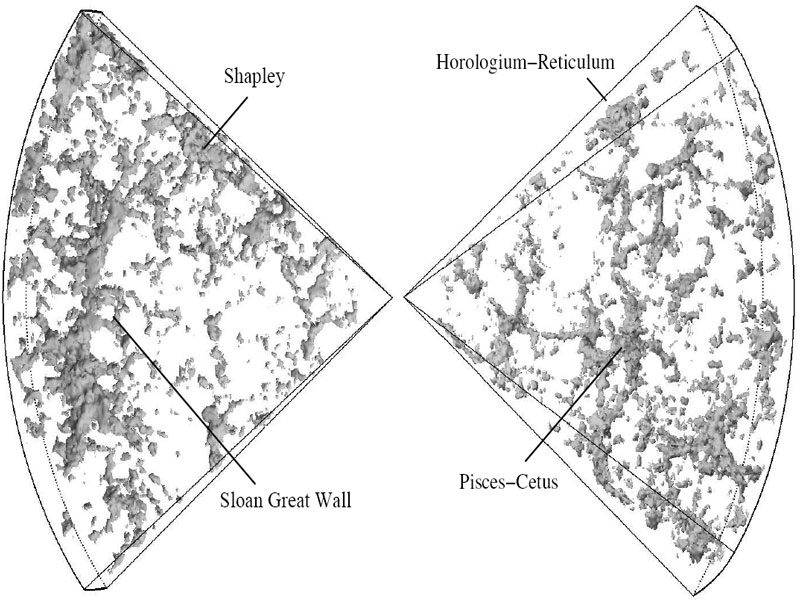[Orginally published as the third part of List of Star Formation Problems]
Black holes that shouldn’t exist
A black hole is not a star but assumed to be the carcass, so to speak, of certain stars after their deaths. If there are black holes that “shouldn’t exist,” because standard theory cannot account for the circumstances of their formation, they then become another kind of problem with star formation.
If the Big Bang theory were true, this black hole at 12.8 billion light-years away containing the mass of 12 billion suns wouldn’t be there. But it is. The black hole that shouldn’t exist is described in a 2015 Nature paper, a 2016 Science News “not enough time” report, and in this EuroNews video:
There’s also a nearby massive black hole that “should not even exist,” but it does, according to Prof. Liu Jifeng who headed the stunning research published in the March 2019 journal Nature, the formation of which “would be extremely challenging within current stellar evolution theories.”
A Whole List of Galaxy Formation Problems
- Huge Galaxies: appear at such great distances that they would have had to form too rapidly for a BB time frame.
- Spiral Galaxies: near and far, have the same amount of spin, whether next door or 10 billion light-years away.
- Huge and Spiraled: “The biggest challenge to the standard model of galaxy formation could be the number of large galaxies showing the spiral structure in the early universe” acknowledged in 2003 in Science News.
- Clustered Galaxies: near and far, are strongly clustered, contradicting the expected influence of gravity over time
- Galaxy Superclusters: enormous galaxy clusters like bubbles or filaments such as the Sloan Great Wall, which is more than a billion light-years across, all lack the time for gravity to pull them together.
- Even Temperature Resists Galaxy Formation: The Big Bang model says that gravity working on an uneven distribution of matter would create galaxies, but the background temperature of the universe (CMB) is about 2.73 degrees Kelvin with less than 1/10,000th of a degree variation, indicating an extreme “evenness by which gravitational pull in every direction would tend to prevent clumping such that galaxies would not form in a mere 14 billion years.
- Fractal Universe: if the universe is fractal, as it appears, the Big Bang then doesn’t explain galaxy distribution.
- Mature Galaxies: 12B light-years away where we should only see infant galaxies formed, we see mature galaxies
- Spiral Galaxies “Too Perfect”: Cosmologists say that the missing collisions in pristine galaxies is “an embarrassment”
- Closest Bulge a Mystery: Even the formation of the closest one to us, the bulge within our own Milky Way, is a mystery.
- Galaxy Spin: The Big Bang does not explain even why galaxies spin.
- Spiral Arms: after supposed billions of years, their spiral arms should now be deformed.
- Fast Moving Arms: The Big Bang requires hypothetical entities to justify the great speed of the spiral arms of galaxies.
- Simulation Can’t Validate Standard Theory: In 2011 the Royal Astronomical Society reported on a failed effort at University College London to mathematically validate by computer simulation the traditional theory of the formation of the spiral arms of galaxies.
- New Theory of Galaxy Arm Formation Fails: While the BB model claims that spiral galaxy arms are billions of years old, even by a new theory publicized by the RAS, a galaxy “arm breaks up” after only 100 million years.
- Transparency Problem: Surprised astronomers are seeing objects that are apparently far more distant than any that they expected to be able to see. Images from NASA’s FERMI telescope have recently exacerbated the “transparency problem” because comparing observation to Big Bang predictions, there is a tremendous amount of missing “infrared light between galaxies,” apparently billions of years worth. According to New Scientist, this “may call into question our understanding of how galaxies are born,” which of course was rather questionable already (per this list).
As noted at rsr.org/bbp, this transparency problem may exacerbate another problem, the one regarding where to hide all the additional regular matter allegedly created in the Big Bang, the equivalent of “twice the amount of material we can see in stars and hot gas. Where are those particles?” Yes. Where?
And RSR’s own Density Problem: As journalists, here at Real Science Radio we typically report what others have published. But consider NASA’s acknowledgment of the missing density problem after sophisticated measurements indicate that there exist only half of the expected baryons (normal matter) that should exist in the universe based on the prediction of the Big Bang theory. Therefore RSR now asks, if there actually is only half the ordinary matter, and thus less gravitational attraction than previously presumed, with that much less matter to coalesce, does such missing matter imply yet another problem for galaxy formation?
Which Came First, Stars or Galaxies?
A chicken-or-egg uncertainty applies also to the universe. In 1931, Georges Lemaître, father of the big bang theory, spoke to the British Association in passing of the “formation of extra-galactic nebulae out of a uniform mass of gas or stars…” but, which was it? Then, almost 70 years later, according to John Maddox, physicist and 23-year editor of the journal Nature, scientists still couldn’t determine:
Which objects came first, stars or galaxies? Theoretical science offers no clear guidance, while observations of the distant (or early) universe do not yet go back far enough. The general (and fair) assumption is that the first objects in the sky would have sprung from naturally occurring variations, or fluctuations, of the density of matter in an otherwise uniform gaseous cloud. Places where the density of the matter is, by chance, greater than the average would sometimes grow by gravitational attraction at the expense of neighboring patches and then, having become still more massive, would attract further gas until they had assembled enough to make a star, or perhaps a whole galaxy. — John Maddox, What Remains to be Discovered, pp. 48-49






